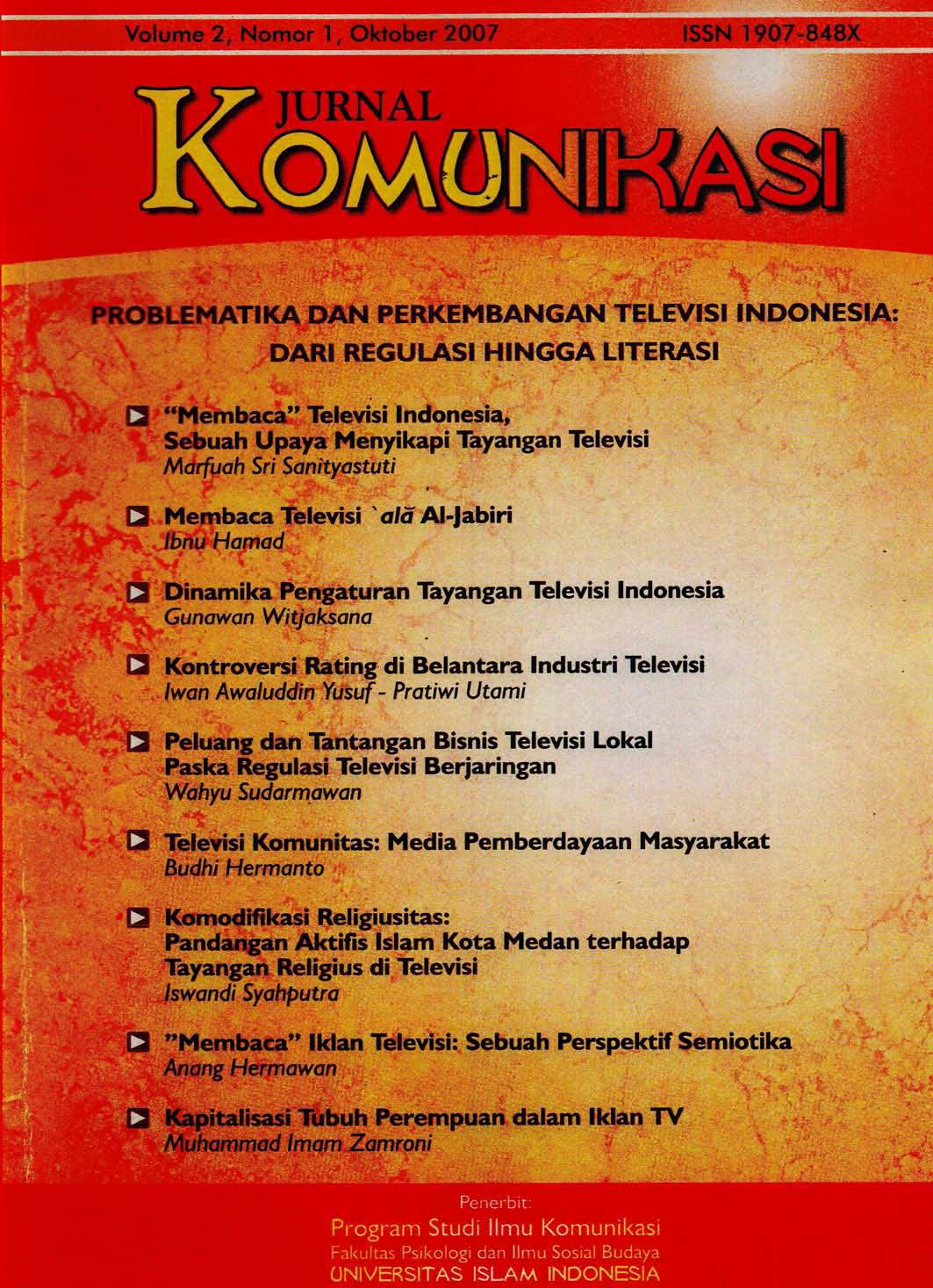Main Article Content
Abstract
This article is based on a field research. The research was conducted in Medan, February 2007. The main objective of the research is to understand, analyze, and describe the opinion of Islamic activists in Medan toward religious television program. Religious television program is a television program which contains Islamic syiar (dakwah Islamiyah) and presented using various programs, such as lecture, television movie, music show, talk show, or dai contest This research used critical paradigm with qualitative approach by using deep interview technique toward 15 Islamic activists in Medan. The choice of these subjects is based on his/her structural position in certain religious organization or his/her activity in Islamic syiar (dakwah Islamiyah). This research shows that the subjects consider television has two faces, which is giving benefit and disadvantage (mudharat) in the same time. This opinion had lead toward a discussion of the law of watching television (is it halal or haram?). Although it has benefit, the religious television program is considered ineffective in giving influence toward Islamic religious life, because it is not reflecting lslam as a religion.
Article Details
Authors who publish with this journal agree to the following terms:
- Authors retain copyright and grant the journal right of first publication with the work simultaneously licensed under a Creative Commons Attribution License that allows others to share the work with an acknowledgement of the work's authorship and initial publication in this journal.
- Authors are able to enter into separate, additional contractual arrangements for the non-exclusive distribution of the journal's published version of the work (e.g., post it to an institutional repository or publish it in a book), with an acknowledgement of its initial publication in this journal.
- Authors are permitted and encouraged to post their work online (e.g., in institutional repositories or on their website) prior to and during the submission process, as it can lead to productive exchanges, as well as earlier and greater citation of published work (See The Effect of Open Access).
